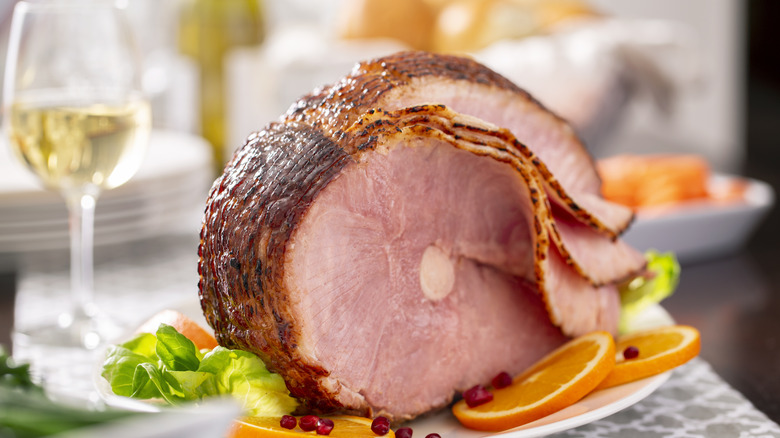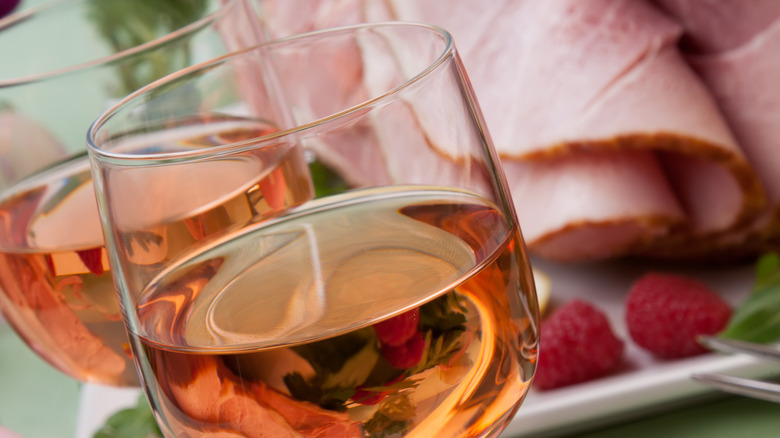An Expert Weighs In On The Best Wines To Drink With Ham
Whether you're planning to serve a 15-pound bone-in ham for a holiday meal or just trying to make your ham and cheese sandwich more delicious, knowing how to pair ham with the right wine is essential. Whether you smoke it, stud it with cloves and pineapple, or glaze it with pecans, bourbon, and cane syrup, we've consulted an expert to find the best wines to drink with this delicious meat.
Food Republic spoke with Matt Strauch, a sommelier and the general manager of Noble Riot, a modern wine bar in Denver, Colorado. Noble Riot's kitchen offers customized nibble boards to complement its wine, and wine classes to discover new regions. We asked the expert which red and white varieties taste the best with ham, and discovered the answer is nuanced.
According to Strauch, when choosing the proper wine, it's essential to "complement [ham's] saltiness and richness." He recommends "lighter-bodied wines with good acidity" to "contrast ham's savory flavors." If you prefer white, Strauch favors "a crisp, aromatic riesling or a dry chenin blanc." Although delicious, oaky chardonnay is one of the worst wines to pair with ham, and is better suited for the cheese course. When picking a red, Strauch prefers a "light-bodied pinot noir or a fruity Beaujolais" but adds: "If you want to go down a weirder path, check out Blaufrankisch from Austria," which has high acidity and cherry notes.
Wines to pair with sweet or savory glazed hams
Although ham is considered red meat, the same wine that complements a prime rib or ribeye steak may not taste as good with ham, especially if it's glazed. Bold cabernet sauvignons are commonly served with steak. However, their big flavor and tannins can overpower ham as their taste lingers on your tongue. The ingredients you use to glaze a ham will influence which type of wine pairs the best.
When adding a glaze that's sugar-dominant, like honey or brown sugar, Matt Strauch suggests "slightly sweeter wines to complement the sweetness of the glaze," such as an "off-dry riesling or a fruity rosé." While dryness and sweetness are on opposite ends of the spectrum, an "off-dry" wine lies in the middle. Rieslings containing less than 10 grams of sugar per liter are categorized as dry, whereas if they contain 30 grams of sugar or more, they are called sweet.
If your sweet glaze includes something tangy like pineapple or mustard, Strauch prefers "a slightly acidic white wine ... or a tropical sauvignon blanc." Look for drier whites with high acidity and citrusy flavors that "work well to balance the dish." Strauch also likes Portugal's Luis Seabra's Xisto Ilimitado Branco, which is mineral-forward with flavors of pears and green apples, adding: "Remember, in sweetness pairings, it's generally best to find wines that are sweeter than the food you're pairing with."


